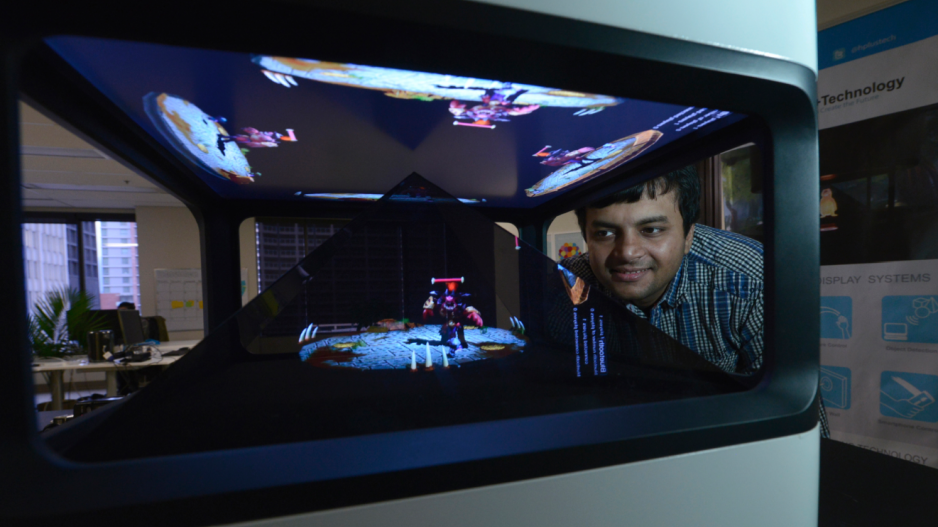Whether it’s resurrecting the likes of musical artists such as Michael Jackson or Tupac Shakur, holograms and augmented-reality systems have mostly been relegated to entertainment purposes.
H+Technology, too, has capitalized on that potential by developing a holographic entertainment room for the Ronald McDonald House in Vancouver, which provides support for sick children and their families.
But the Vancouver-based tech company is one of a number of startups also looking at developing business applications for this type of augmented reality, with plans to launch a portable consumer hologram device in the first half of 2015.
“We see this holographic medium as the next big information medium,” H+Technology chief technology officer Dhruv Adhia said.
That means using the portable device to provide everything from holographic teleconferencing to holographic business presentations.
Adhia said one of the keys is keeping the software platform open so other users can develop additional business applications for the device.
The Ronald McDonald House technology, which displays a holographic talking beaver in the centre of the “Magic Room” that responds to gestures and interactive touch walls, costs between $60,000 and $150,000.
The portable device, meanwhile, will probably cost closer to $400 or $500 once it hits the market, according to Adhia.
Vancouver-based angel investor Boris Wertz, founder of Version One Ventures, said virtual and augmented-reality technology like this is going to be one of 2015’s big business trends.
“It has never really broken through and mostly that was because of the hardware and the software not being ready.”
But Wertz said Facebook’s (Nasdaq:FB) US$2 billion March acquisition of Oculus VR, whose head-mounted virtual reality (VR) displays have reduced the motion sickness issues previously plaguing other systems, has given the sector a kick-start.
Although the Oculus products aren’t expected to hit the consumer market until 2015, Conquer Mobile has been using developer kits to create VR programs for medical training simulations.
The Vancouver company is moving its operations south of the Fraser River in January after securing a deal with Kwantlen Polytechnic University, which is using the company’s VR technology to train nurses in how to pass instruments to doctors during surgery.
Nursing students put on goggles and handle control sticks to simulate a medical situation.
“A new doctor, a new nurse practising on a patient isn’t as safe as practising on a simulated patient,” said Conquer Mobile CEO Angela Robert.
The company has also developed virtual reality software to simulate surgery on an iPad, so someone could be learning how to assist in a surgery while sitting on a bus.
“This type of training actually sticks with the person longer,” Robert added.
She said people should also keep in mind that VR technology that is software-based, such as the iPad application, is much easier to deploy and less expensive than hardware-centric technology.
Conquer Mobile is focusing on both, Robert said, because they complement each other and offer different benefits to users.
But both Robert and Wertz cautioned it might still be a few years until VR breaks through to the mainstream.
“We’re still building out the infrastructure and the hardware layer,” Wertz said.
“The reality is it’s still super early.”




